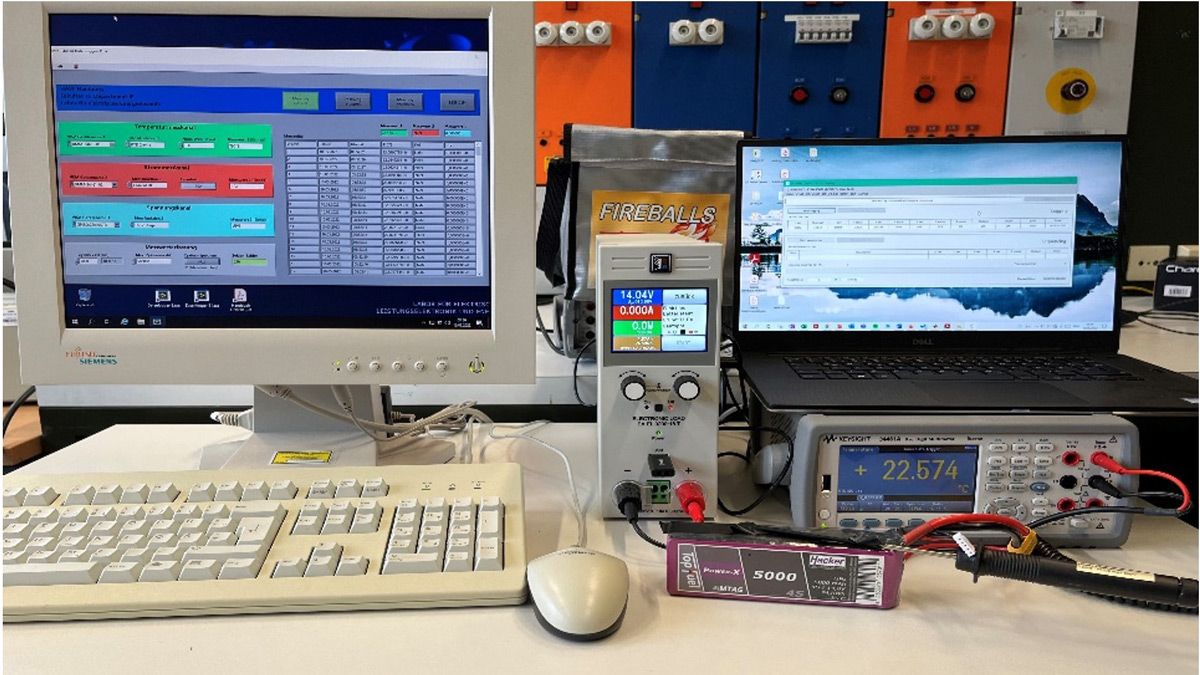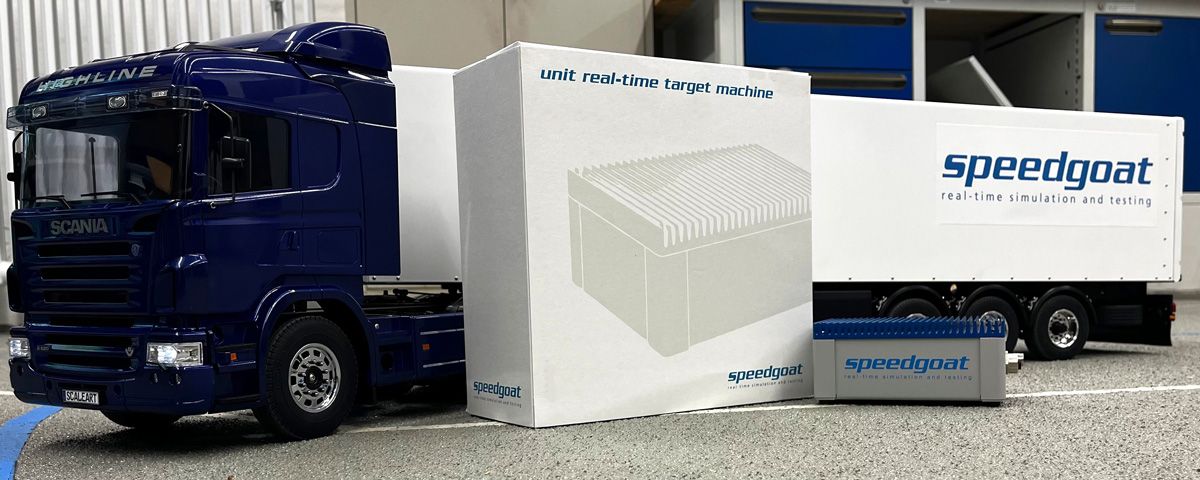RC Cars, VR, and Haptic Feedback Transform Automotive Engineering
Engineering Students Test Their Algorithms on Scaled Vehicles
Classroom experience only gets you so far when studying automotive engineering. But testing full-sized cars requires a lot of space for a test track and significant capital investment in vehicles. And there is always the chance that the cars crash during testing. As a result, many engineering programs are unable to provide students with the level of hands-on experience they need to work in the industry.
Hamburg University of Applied Sciences (HAW Hamburg) found a way for students to gain this hands-on experience. The university’s automotive and aeronautical engineering department turned to scaled-down remote-controlled (RC) cars that are highly programmable and behave like full-sized vehicles. Students program the RC cars, then test-drive them from consoles equipped with steering wheels and pedals. A large screen or VR headset provides students with a driver’s point of view as the cars travel a miniature track inside the vehicle lab.
The project began after a student asked Dirk Engel, a professor in the vehicle technology and aircraft construction department, about the possibility of working with RC cars. After experimenting, Engel and the department’s administrators decided that RC cars could be a powerful teaching tool and launched the Automotive Development in 1:x (AUDEx) project.
“The AUDEx project keeps growing as more students become interested and contribute their own ideas,” Engel says. “Most of the projects are based on these student-initiated ideas.”
Students occasionally work with full-sized vehicles, but AUDEx increases the amount of hands-on exposure to the field. At 1:8 scale, these RC cars still provide many of the capabilities important in testing environments, such as the ability to adjust springs and dampers, chassis geometry, and mass distribution. The scaled-down cars still allow students to experience the full development workflow, enabling them to develop and test algorithms for lane assist systems, parking sensors, self-driving capabilities, and more.
AUDEx equips the RC cars with cameras, microcontrollers, sensors, and actuators that send data to an advanced driver-in-the-loop system that students can use to experience a realistic test-drive. The driving simulator includes a steering wheel with haptic feedback, a seat with an eight-degrees-of-freedom motion system, and a motion platform. All the pieces look like an elaborate gaming rig and work together to reproduce the sensation of driving.
With customizable RC cars and tools such as MATLAB and Simulink to control and test them, HAW Hamburg professors can assign students real-world problems to solve on their own.
The AUDEx student program’s 1:8 scaled-down remote-controlled car, which is test-driven using a driving simulator with VR and haptic feedback. (Video credit: Hamburg University of Applied Sciences)
“It’s like a big playground for engineers,” Engel says.
This level of freedom makes AUDEx different from most automotive engineering programs, which mainly rely on lab work with prepared setups. Students in those programs work on assignments with very structured answers, which is not how the automotive development industry operates. With customizable RC cars and tools such as MATLAB® and Simulink® to control and test them, HAW Hamburg professors can assign students real-world problems to solve on their own.
“It’s not just the pure theory,” Engel says. “As a university of applied sciences, we must be hands-on.”
Programming RC Cars
According to estimates, modern cars can have up to 3,000 computer chips, meaning automotive engineers today also have to be programmers. That’s reflected in AUDEx’s curriculum, with students learning MATLAB in their first year, getting familiar with the programming environment as a foundation for the rest of the three-year degree.
Students, depending on their area of study, will go on to use many MATLAB and Simulink products. “We use a variety of toolboxes for the different tasks,” Engel says.
In a course on designing suspension systems, students learn how to use Control System Toolbox™. In a class on vibration theory, they develop skills using Signal Processing Toolbox™. They model tire use with Vehicle Dynamics Blockset™ and deploy code to the RC cars’ microcontrollers and microcomputers using Simscape™ within Simulink.
For a course called Vehicle Lab, students perform six experiments using full-sized cars. The university equips the cars with management technologies that produce data for students to process with MATLAB and special toolboxes, depending on the project.
With car manufacturers often using driver-in-the-loop setups similar to those in the AUDEx project, these unique programming skills can help graduating students land their first job.
The AUDEx project also offers students the opportunity to be active in pioneering research fields such as electric vehicles and autonomous driving. The RC cars are electric, providing exceptional learning opportunities to students interested in specializing in electric vehicles. They monitor battery health with MATLAB and ThingSpeak™ and model battery use with Simscape Battery™. Students working on autonomous driving rely on Deep Learning Toolbox™ to teach the car how to navigate on its own.
Another way that AUDEx helps students succeed is through a centralized knowledge base that builds off work from one year to the next, enabling knowledge transfer from student to student. Some students contribute to the knowledge base beyond the three-year program when they return for an additional year to earn a master’s degree. This means they have more time to drill down into a specialized area and gain exposure to different toolboxes.
“They choose their favorite tool and field of interest to work on,” Engel says. “They have a lot they can focus on.”
In Engel’s class, taken in the last semester of the program, students combine different tools with Simulink to explore topics such as rapid control prototyping, software-in-the-loop testing, and hardware-in-the-loop testing. For example, the lab has an autonomous 1:14 truck setup running with Speedgoat® Hardware and Simulink modeling.
But students don’t just program the cars—they also program the driver-in-the-loop setup, enhancing the motion platform to control with the virtual vehicle. With car manufacturers often using driver-in-the-loop setups similar to those in the AUDEx project, these unique programming skills can help graduating students land their first job.
From Student to Engineer
Engel estimates that 99 percent of his students enter the automotive industry after getting their degree. Employers ranging from major car manufacturers to tire companies know that HAW Hamburg graduates have gone through the complete automotive development workflow.
AUDEx also has a strong connection to the industry, with international OEMs from the automotive and truck industries working with the program on engineering issues and testing ideas on the university’s driver-in-the-loop setup. Companies have hired students from AUDEx, including Christoph Olbrich, who went through the program and will work for one of the OEMs while completing his Ph.D. His undergraduate research focused on using MATLAB for signal processing with machine learning for operational load simulations.
“People did make some jokes about the tiny little cars, but when we describe how we are helping to shape the future of electric and self-driving vehicles with these little cars, then they understand it.”
Olbrich says the RC cars were useful stand-ins for working through the full automotive development of his projects. People outside of AUDEx have teased him about playing with toys at school, but he sees it as an opportunity to talk about innovative work.
“People did make some jokes about the tiny little cars,” Olbrich says, “but when we describe how we are helping to shape the future of electric and self-driving vehicles with these little cars and explain the purposes of the projects, then they understand it.”
Read Other Stories
CONTROL SYSTEMS
Coding the Perfect Car Crash
Closing the Gap Between Virtual and Physical Crash Simulations Helps Automotive Industry Save Lives
GREEN TECHNOLOGY
From Virtual Vehicle to All-Electric Off-Road UTV in Less Than a Year
Going Green with an All-Electric Utility Task Vehicle




